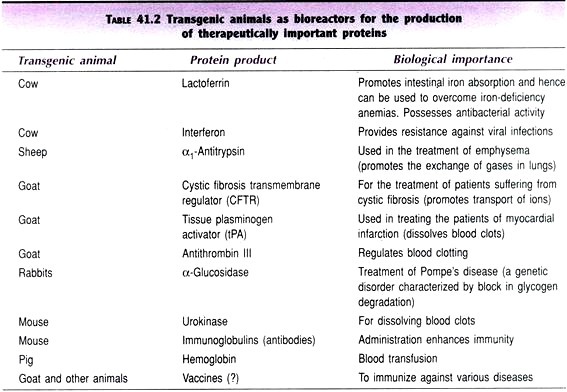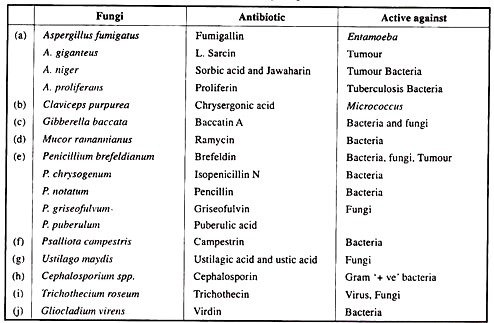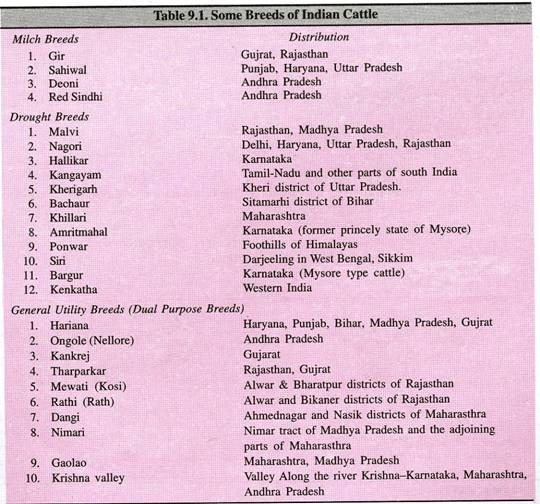ADVERTISEMENTS:
Excretion in Animals, Humans and Plants!
Chemical reactions occur in the cells of living organisms all the time to carry out the life processes.
The sum of these reactions is called metabolism. Metabolism produces useful products as well as toxic (poisonous) by-products.
ADVERTISEMENTS:
These toxic substances have to be removed as they are harmful if allowed to accumulate. The removal of metabolic waste products from the body of an organism is known as excretion.
The major excretory products are carbon dioxide, excess water, and nitrogenous compounds like ammonia, urea, uric acid, etc. Carbon dioxide and water are produced in the process of tissue respiration. Nitrogenous compounds are formed from the breakdown of proteins and amino acids. Water and salts in excess of the body’s needs are also excreted.
We acquire most of the water with our food and drink and some by metabolism, e.g., the water produced during cellular respiration. Other excretory products include chemicals from medicines, toxic substances, and circulating hormones that have already served their purpose. We will learn how metabolic wastes get eliminated.
Excretion in animals:
Many unicellular organisms like Amoeba throw out their wastes by diffusion from their body surface. Protozoan’s have no organs for excretion. As they live in an aquatic habitat, their wastes are eliminated by diffusion through the plasma membrane.
ADVERTISEMENTS:
Simple multicellular organisms like Hydra throw out solid waste matter through their mouth. Higher multicellular organisms have well-defined specialized excretory organs. These organs could be simple tubular structures as in flatworms and leech.
The excretory organs of insects (e.g., grasshopper, cockroach and housefly) are also tubular. They remove nitrogenous wastes from the body fluid and help in maintaining the water balance in the body.
In vertebrates, the main organs of excretion and maintenance of water balance are the kidneys.
Excretion in human beings:
Although the kidneys are the main organs of excretion, the skin, lungs and liver also help in excretion.
Skin:
Our skin has sweat glands, through which we excrete small amounts of water, urea and salts.
Liver:
The liver excretes bile, which contains bile pigments. These are produced by the breakdown of old RBCs in the liver. As hemoglobin breaks down, its iron is retained, while the pigment (haem) is excreted with the bile. The liver also excretes cholesterol.
Lungs:
ADVERTISEMENTS:
The lungs help in getting rid of carbon dioxide, formed as a result of cellular respiration, through exhalation.
Excretory System in Man:
Our excretory system consists of kidneys, blood vessels that join them, ureters, urinary bladder and urethra. They help produce and excrete urine.
There are two bean-shaped kidneys that lie in the abdominal cavity, one on either side of the vertebral column. The kidneys are reddish brown. Each of them is about 10 cm long and weighs about 150 g. Although they weigh less, they receive a lot of blood for filtration.
A volume of blood nearly equivalent to that in the whole body passes through the kidneys every four or five minutes. The kidneys produce urine to filter out the waste products, like urea and uric acid, from the blood.
Urine leaves each kidney through a tube called ureters. The ureters from both the kidneys are corrected to the urinary bladder that collects and stores urine. Ureters carry urine from the kidneys into the urinary bladder. The urethra is a canal that carries urine from the bladder and expels it outside the body.
Internal Structure of a Kidney:
Each kidney is enclosed in a thin, fibrous covering called the capsule. A renal artery brings blood into the kidney, along with nitrogenous waste materials. After filtration in the kidney, the purified blood leaves the kidney through a renal vein.
Two distinct regions can be seen in the section of a kidney:
(1) An outer, dark, granular cortex and (2) an inner, lighter medulla. The hollow space from where the ureter leaves the kidney is called the pelvis. Each kidney is made up of numerous (about one million) coiled excretory tubules, known as nephrons, and collecting ducts associated with tiny blood vessels. A nephron is the structural and functional unit of a kidney, having three functions— filtration, reabsorption and secretion.
ADVERTISEMENTS:
A cluster of thin-walled blood capillaries remains associated with the cup-shaped end of each nephron tubule. These capillaries bring blood from the body to the nephron for filtration. The network of capillaries spreads over the nephron tubules also. These capillaries finally carry purified blood to the body.
Structure and Function of a Nephron:
A nephron consists of a long coiled tubule and the Malpighian corpuscle. The tubule of the nephron is differentiated into the proximal convoluted tubule, Henle’s loop and the distal convoluted tubule. The distal tubule opens into the collecting duct.
At the proximal end of the nephron is the Malpighian corpuscle, which consists of Bowman’s capsule and the glomerulus. Bowman’s capsule is a double-walled cuplike structure which surrounds the dense network of blood capillaries called the glomerulus.
The process of excretion in nephron:
ADVERTISEMENTS:
The process of excretion may be divided into three stages- tubular secretion.
Filtration:
Filtration of blood occurs under high pressure in the nephrons of the kidney. Blood enters the glomerulus through the afferent arteriole (with a wider lumen) and leaves through the efferent arteriole (with a narrow lumen). Therefore, blood passes through the glomerulus under pressure. This results in filtration of blood.
Water and small molecules are forced out of the walls of the capillaries of the glomerulus and Bowman’s capsule and enter the tubule of the nephron. Large molecules remain in the blood of the glomerulus. The filtrate contains water, glucose, salts, urea, vitamins, etc. It is called the glomerular filtrate.
Selective reabsorption:
ADVERTISEMENTS:
Some molecules of the glomerular filtrate are selectively reabsorbed into the blood. The glomerular filtrate flows through the proximal convoluted tubule, the U-shaped Henle’s loop and the distal convoluted tubule. It contains many useful substances such as glucose, amino acids and salts.
These are reabsorbed by a process, which requires energy. Without reabsorption, these nutrients could have been lost with the urine. The filtrate now contains urea, some salts and water. Reabsorption of solutes into the blood increases the water concentration of the filtrate.
Then water is reabsorbed into the blood by the process of osmosis, and the osmotic balance is restored. The amount of water reabsorbed depends on the amount of excess water in the body and that of the dissolved waste to be excreted.
This reabsorption of water from the filtrate to maintain the water balance of the body fluid is known as osmoregulation. In this way the kidneys serve as water-conserving organs. After reabsorption from 180 L of filtrate in the kidney, only 1-2 L of urine is produced.
Tubular secretion:
Some nitrogenous waste products like creatinin and some other substances like potassium ions are removed from the blood by the distal convoluted tubule, and are then added to the urine. This is called tubular secretion.
ADVERTISEMENTS:
Control of excretion:
The urine that is formed continually collects in the urinary bladder. As the bladder expands, its pressure creates an urge to pass urine through the urethra. As the bladder is muscular, the urge to urinate is under voluntary nervous control.
Kidney Failure and the Survival Kit—Haemodialysis:
The kidneys may be damaged due to infection, injury, diabetes, and extremes of blood pressure. A damaged kidney cannot function efficiently to remove urea, ions, water, etc., from the blood. This malfunctioning results in the accumulation of toxic wastes like urea (uremia), which can lead to death.
One of the ways to treat kidney failure is to use a ‘dialysis machine’ that acts as an artificial kidney. It has a long tube like structure made of Cellophane suspended in a tank (dialyser) of a fresh dialysis fluid (dialysis). The Cellophane tube is partially permeable and therefore allows solutes to diffuse through. The dialysis fluid has the same concentration as normal tissue fluid, but nitrogenous wastes and excess salts are absent.
During dialysis, the blood of the patient is withdrawn from an artery and cooled at 0°C. It is maintained in a liquid state by adding an anticoagulant and by other special treatments. It is pumped through the dialysis machine. Here, the nitrogenous waste products from the blood diffuse into the dialysis fluid. The purified blood is then warmed to the body temperature and pumped back into the patient’s body through a vein.
The dialyser is specific for each patient to avoid infections. Dialysis through an artificial kidney has to be carried out at frequent intervals. This process of purification of blood is called haemodialysis.
A dialysis machine works like a kidney except that no selective reabsorption takes place in the former.
An artificial kidney:
(1) Helps remove harmful wastes, extra salts and water;
(2) Controls blood pressure; and
(3) Maintains the balance of sodium and potassium salts in a patient whose kidneys have failed.
Excretion in plants:
Compared to animals, plants do not have a well-developed excretory system to throw out nitrogenous waste materials. This is because of the differences in their physiology. Therefore, plants use different strategies for excretion.
The gaseous waste materials produced during respiration (carbon dioxide) and photosynthesis (oxygen) diffuse out through stomata in the leaves and through lenticels in other parts of the plant. Excess water evaporates mostly from stomata and also from the outer surface of the stem, fruits, etc., throughout the day. This process of getting rid of excess water is called transpiration.
The waste products, like oxygen, carbon dioxide and water, are the raw materials for other cellular reactions. The excess of carbon dioxide and water are used up in this way. The only major gaseous excretory product of plants is oxygen!
Many plants store organic waste products in their permanent tissues that have dead cells, e.g., in heartwood. Plants also store waste within their leaves or barks. These wastes are periodically removed as the leaves and barks fall off.
Some of the waste products are stored in special cells or cellular vacuoles. Various waste products such as tannins, essential oils, gums, resins, etc., are produced during catabolic processes. Tea leaves, amla and betel nuts (supari) contain tannin. Tannins are found also in the barks of trees.
The leaves of many plants, like Eucalyptus, lemon, sacred basil (tulsi), etc., contain essential oils. The rind of oranges and lemons and the petals of flowers like rose and jasmine also contain oils. Some plant wastes are stored as a thick, white fluid. You may have seen white fluid ooze out when you pluck a papaya or a fig or the leaves of yellow oleander (pila kaner). This white fluid is called latex.
Gums are a group of sticky, water- soluble wastes found in the common gum tree (babul). Resins are another group of wastes found commonly in the stems of conifers (e.g., pine, fir).
Alkaloids are a group of toxic waste products. But some of these are useful to us. Quinine and morphine are medicines derived from alkaloids stored in Cinchona bark and opium poppy flowers respectively. Caffeine found in coffee seeds and nicotine in tobacco leaves is also alkaloids.
Organic acids, which might prove harmful to plants, often combine with excess cations and precipitate out as insoluble crystals that can be safely stored in plant cells. Calcium oxalate crystals accumulate in some tubers like yam (zamikand).
Aquatic plants lose most of their metabolic wastes by direct diffusion into the water surrounding them. Terrestrial plants excrete some waste into the soil around them.





